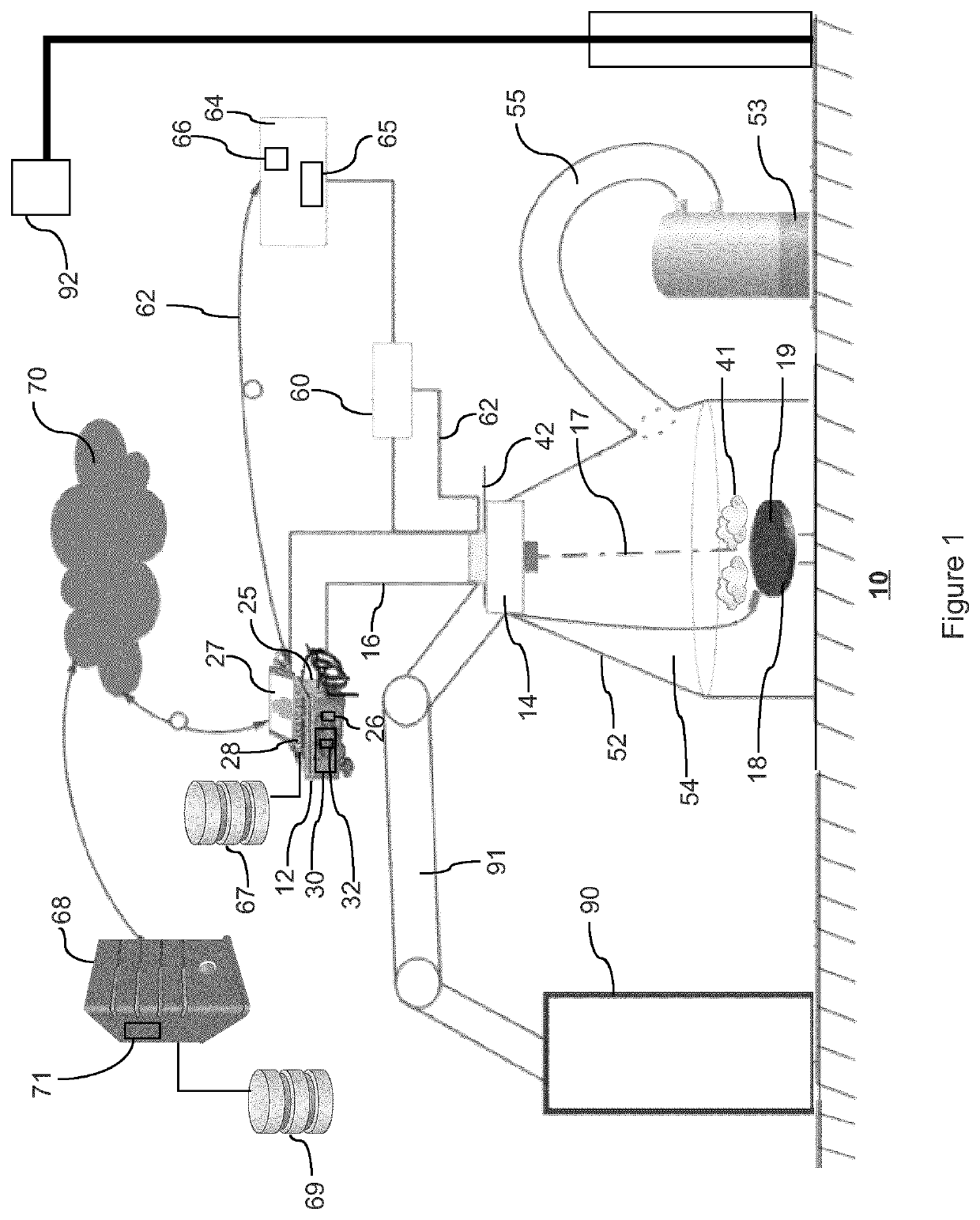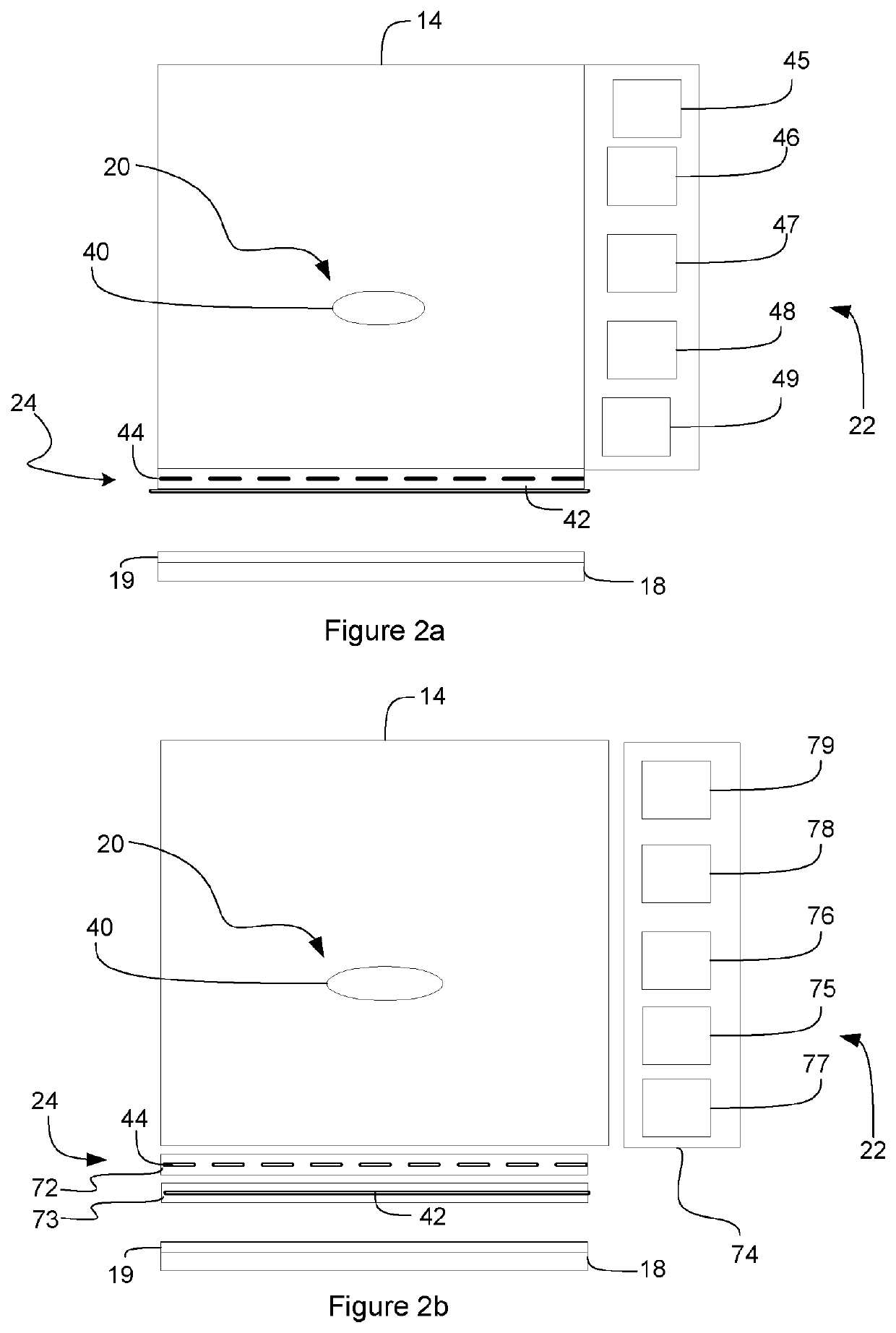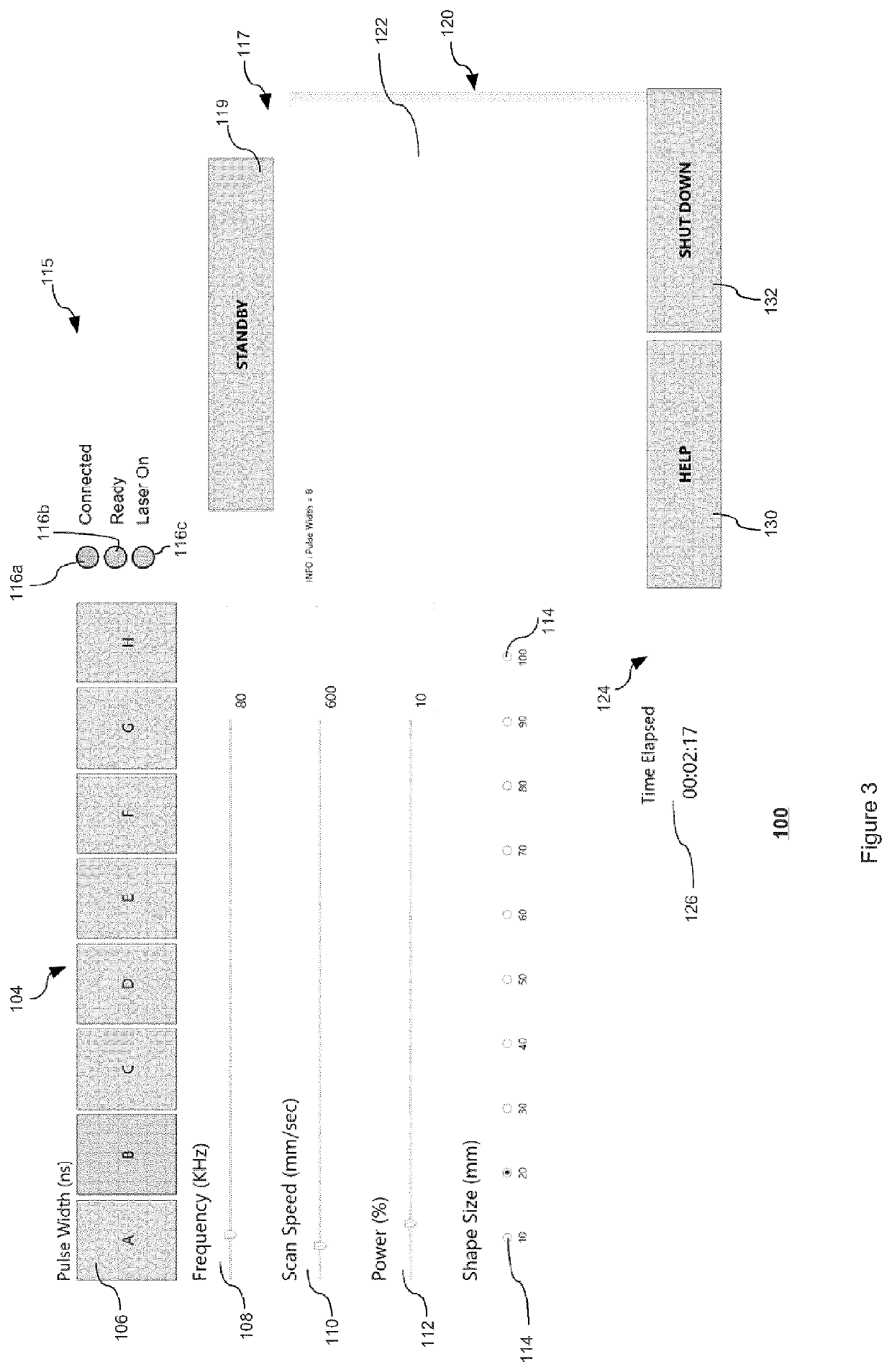Artificial intelligence-based robotized smart laser ablating systems for multi-dimensional objects
a multi-dimensional object and artificial intelligence technology, applied in the field of laser ablation, can solve the problems of corrosive and aggressive to many types of surfaces, difficult to remove contaminants from cement, concrete and bricks, and high cost of cleaning up chemically contaminated structures
- Summary
- Abstract
- Description
- Claims
- Application Information
AI Technical Summary
Benefits of technology
Problems solved by technology
Method used
Image
Examples
Embodiment Construction
[0041]Various embodiments of the disclosure are discussed in detail below. While specific implementations are discussed, it should be understood that this is done for illustration purposes only. A person skilled in the relevant art will recognize that other components and configurations may be used without parting from the spirit and scope of the disclosure. Like reference numerals are used to designate like parts in the accompanying drawings.
[0042]The detailed description provided below in connection with the appended drawings is intended as a description of the present examples and is not intended to represent the only forms in which the present example may be constructed or used. However, the same or equivalent functions and sequences may be accomplished by different examples.
[0043]FIG. 1 shows a laser ablating system, generally identified by numeral 10, in an exemplary embodiment. Laser ablating system 10 comprises laser 12 coupled to laser ablating head 14 via fibre optic cable...
PUM
| Property | Measurement | Unit |
|---|---|---|
| frequency | aaaaa | aaaaa |
| size | aaaaa | aaaaa |
| frequencies | aaaaa | aaaaa |
Abstract
Description
Claims
Application Information
 Login to View More
Login to View More - R&D
- Intellectual Property
- Life Sciences
- Materials
- Tech Scout
- Unparalleled Data Quality
- Higher Quality Content
- 60% Fewer Hallucinations
Browse by: Latest US Patents, China's latest patents, Technical Efficacy Thesaurus, Application Domain, Technology Topic, Popular Technical Reports.
© 2025 PatSnap. All rights reserved.Legal|Privacy policy|Modern Slavery Act Transparency Statement|Sitemap|About US| Contact US: help@patsnap.com



